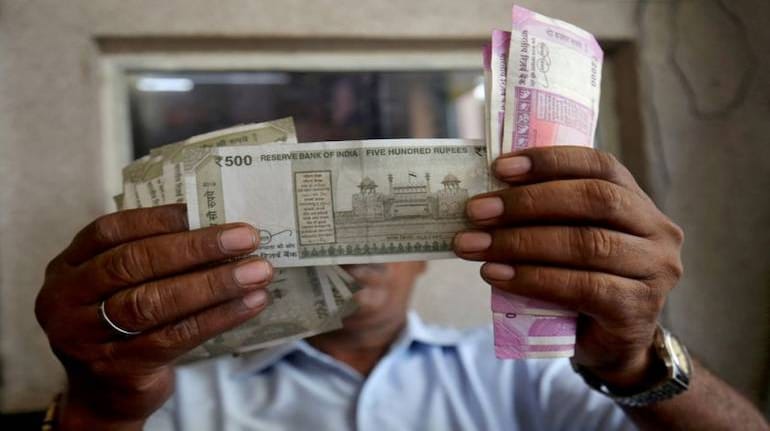
The official GDP data released on May 29 confirm a double whammy for the Indian economy.
The first is a sharp slowdown in economic growth in the January-March quarter to 3.1 percent (lowest in 44 quarters) and for the full year to 4.2 percent (lowest growth in 11 years). Growth was 6.1 percent in 2018-19.
The second bit of bad news is that the fiscal deficit, or the difference between total income and total expenditure of government, ballooned by a huge margin to 4.6 percent in fiscal year 2020 compared with the revised budget estimate of 3.8 percent.
What do these numbers tell us?
India’s growth scene was severely impacted even before Covid-19. In March, only the last week of the month was impacted by the lockdown (the nationwide lockdown began on March 25).
Two key drivers of growth, private consumption and investment activity, have slowed down considerably even before the COVID-19 onslaught. What supported the growth story was growth in agriculture sector and continuing government spending.
Follow our LIVE Updates on the coronavirus pandemic here
The other way of saying this is that growth is set to take a much bigger hit in the new fiscal year (2020-21). That is almost certain now. According to estimates by private economists, the growth will contract for the first quarter (as complete nationwide lockdown impacts production) and for the full year, the growth estimates (the RBI is yet to give its official estimate) shows a sharp contraction of 5-6 percent. The growth in eight core sectors contracted by 38 percent in April, giving us the first indication of the impact in the Q1 economic activity.
What are the yearly numbers?
The growth in manufacturing sector and construction, two key segments from an employment perspective, were at zero and 1.3 percent in FY20 compared with a growth of 5.7 percent and 6.1 percent respectively in the previous year. Similarly, electricity growth slowed to 4.1 percent from 8.2 percent last year while agriculture showed better growth at 4 percent from 2.4 percent earlier.
In Q4, manufacturing contracted by 1.4 percent as against 0.8 percent contraction in the preceding quarter while construction contracted at 2.2 percent against zero growth in Q3. The positives were agriculture, mining and electricity which grew by 5.9 percent (3.6 percent growth in Q3), 5.2 percent (2.2 percent in Q3) and 4.5 percent (a contraction of 0.7 percent in Q3) respectively. These are the segments that helped the Q3 numbers look better. The forecasts for the quarter were ranging in between 1.2 percent to 3.6 percent.
How was the investment scenario performance?
That is even the bigger disappointment. The Gross Fixed Capital Formation (GFCF), which is an indicator that shows investment activity on the ground, contracted by 2.8 percent in FY 2020 as against a growth of 9.8 percent in the previous fiscal year. As a percentage of GDP, GFCF fell to 29.8 percent in FY20 compared with 31.9 percent in the previous year.
What are the consumption trends?
It is the government consumption that has been supporting the growth story. In FY20, the private consumption growth slowed to 5.3 percent from 7.2 percent in the year before, while government consumption grew at a better 11.8 percent compared with 10.1 percent in FY19.
In short, the important thing not to miss here is that till Q4 what we are looking at is merely the partial impact of the coronavirus pandemic (in the last one week) and a significantly overshot fiscal deficit figure last year. The economy was already struggling and this could worsen further on account of the pandemic uncertainty.
Even the most pessimistic growth projections for FY21 could prove to be an underestimate if the lockdown prolongs causing further delay in normal economic activities.
Government consumption cannot be the sole supporting factor going ahead. It is essential to bring back private sector on board. It is highly critical that the government first acknowledge the poor growth scenario even in the pre-COVID-19 period and admit the policy shortcomings. The economic activities have to be opened up without delay. The direct fall out of slowing growth is the rise in unemployment and banking sector distress.
In view of the official growth numbers, it is even more critical now for the government to work on real demand boosting measures. There is no other way for this except putting cash in the hands of rural folks to spend. Merely pushing loans to already indebted small companies without creating space for demand generation will be counter-productive.
COVID-19 is a big jolt on the country. But an economy of 1.3 billion people cannot let the pandemic cast a shadow over its ambitions. The onus is on the government to act.
(Data contributed by Kishor Kadam)
Discover the latest business news, Sensex, and Nifty updates. Obtain Personal Finance insights, tax queries, and expert opinions on Moneycontrol or download the Moneycontrol App to stay updated!